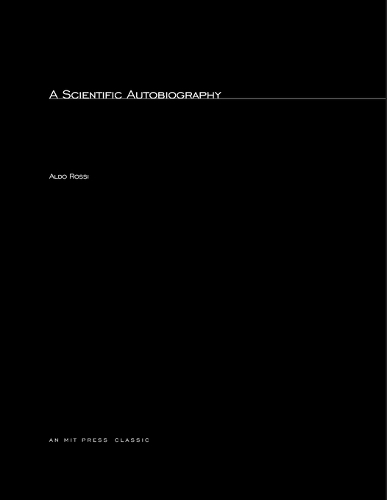
A Scientific Autobiography
(Paperback)
Publishing Details
A Scientific Autobiography
By (Author) Aldo Rossi
Translated by Lawrence Venuti
MIT Press Ltd
MIT Press
29th January 2010
United States
Classifications
General
Non Fiction
History of architecture
Memoirs
720.92
Physical Properties
Paperback
128
Width 216mm, Height 248mm, Spine 8mm
431g
Description
A lyrical memoir by one of the major figures of postmodernist architecture; with drawings of architectural projects prepared especially for the book.This revealing memoir by Aldo Rossi (1937-1997), one of the most visible and controversial figures ever on the international architecture scene, intermingles discussions of Rossi's architectural projects-including the major literary and artistic influences on his work-with his personal history. Drawn from notebooks Rossi kept beginning in 1971, these ruminations and reflections range from his obsession with theater to his concept of architecture as ritual.
Reviews
"As nostalgia has swept the architectural community in recent years, one of the most Proustian design sensibilities to emerge has been that of Italian architect Aldo Rossi. The enfant terrible of Italy's 1960s Tendenza group, which fulminated against the modern movement, Rossi published influential polemics and kept an equally eloquent personal record in the form of notebooks, which MIT has published as the handsome A Scientific Autobiography... His own reminiscences convents and castles, the emotional pull of holy statuary, Melville's dramatics, an adolescent's fear of death, a young artist's ways with life fill his lyrical, erudite notebooks." Portfolio "A document of architectural imagination rather than a merely autobiographical or abstractly theoretical text... Rossi allows his thoughts to roam freely from childhood memories to philosophical observations about architecture tout court... His own projects attempt, and his writings explain, the creation of a magic triangle whose sides are symbolic of life, death, and illusion." Kurt Forster, architectural historian
Author Bio
Aldo Rossi was an Italian architect and architecture theorist and the author of The Architecture of the City (MIT Press, 1984) and other books. He was awarded the Pritzker Architecture Prize in 1990.
